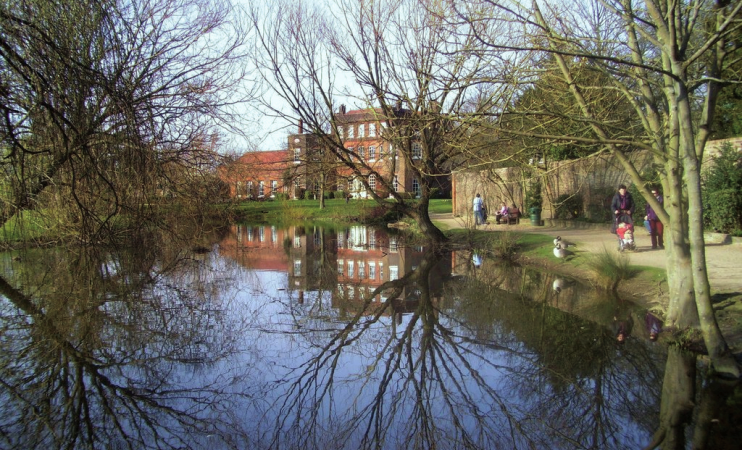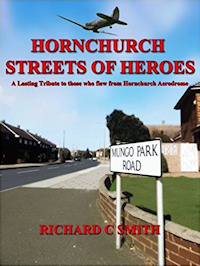Hornchurch
Hornchurch, Havering
A primarily interwar suburb – though with a long history – situated to the south-east of Romford

Evidence of occupation during Middle Palaeolithic times has been found near St Andrew’s church.
Henry II founded a hospice here in 1159, which by 1222 had become known as the Monasterium Cornutum or Monastery of the Horns, possibly a reference to the local leather currying industry, which had either a bull’s or a stag’s head with horns as its guild sign.
Hornchurch outgrew Dagenham in the late Middle Ages and became quite densely populated but in the 15th century Romford gained ascendancy as a centre of trade.
A gently sloping bowl known as the Dell was a popular setting for wrestling matches and other sporting events, especially in the 18th century, and possessed one of the best-known cockpits in the London area. The Dell lay to the south-west of the church in the Mill Field, which was possibly the site of the monastery and is now a recreation ground.
Leather remained at the heart of Hornchurch’s commercial life until the 19th century, with shoemakers, tanners and dealers in animal skins.
The medieval St Andrew’s church was partially rebuilt in 1802 and restored again in 1869. Subsequent renovations have included a stained-glass window featuring a red Ford Fiesta car.

The railway came in 1885 and peripheral suburban development began ten years later with William Carter’s creation of Emerson Park. During the 1920s and 1930s the whole of Hornchurch became a dormitory suburb, its population increasing threefold during this period. In the middle decades of the 20th century Hornchurch held urban district status, incorporating Upminster, Rainham and Harold Wood.
The town centre was heavily redeveloped in the late 1960s and early 1970s but some valuable older houses were preserved, including the 18th-century Langtons, now the borough’s main venue for weddings and celebrations, which is shown in the photograph at the top of this article.*
Queen’s Theatre moved from a converted cinema to purpose-built premises on Billet Lane in 1975, and has become one of outer London’s most successful arts venues. Across the road is Fairkytes, a Georgian house that is now an arts centre.
The Rom skatepark was built on the Upper Rainham Road in the far north-west of the district in 1978. In 2014 it became the first skatepark in Europe to gain listed protection.
By contrast, the art deco Towers cinema (1935) was not given listed protection and Havering council permitted its demolition in 2017 so that a Lidl supermarket could be built on the site. The mayor of Havering cut the ribbon to open the horrible-looking store on 15 March 2018.
To the south of the map below, Hornchurch country park occupies much of the former airfield of RAF Hornchurch, which was an important base for Spitfires during the Battle of Britain. To its west and south-west lie Elm Park and South Hornchurch.
In 1795 ‘Gentleman’ John Jackson defeated the ‘Whitechapel whirlwind’ Daniel Mendoza in a famous fight at the Dell. Jackson’s ungentlemanly technique included holding Mendoza by his hair while punching his head with his other hand. After that match, boxers rarely wore their hair long.
